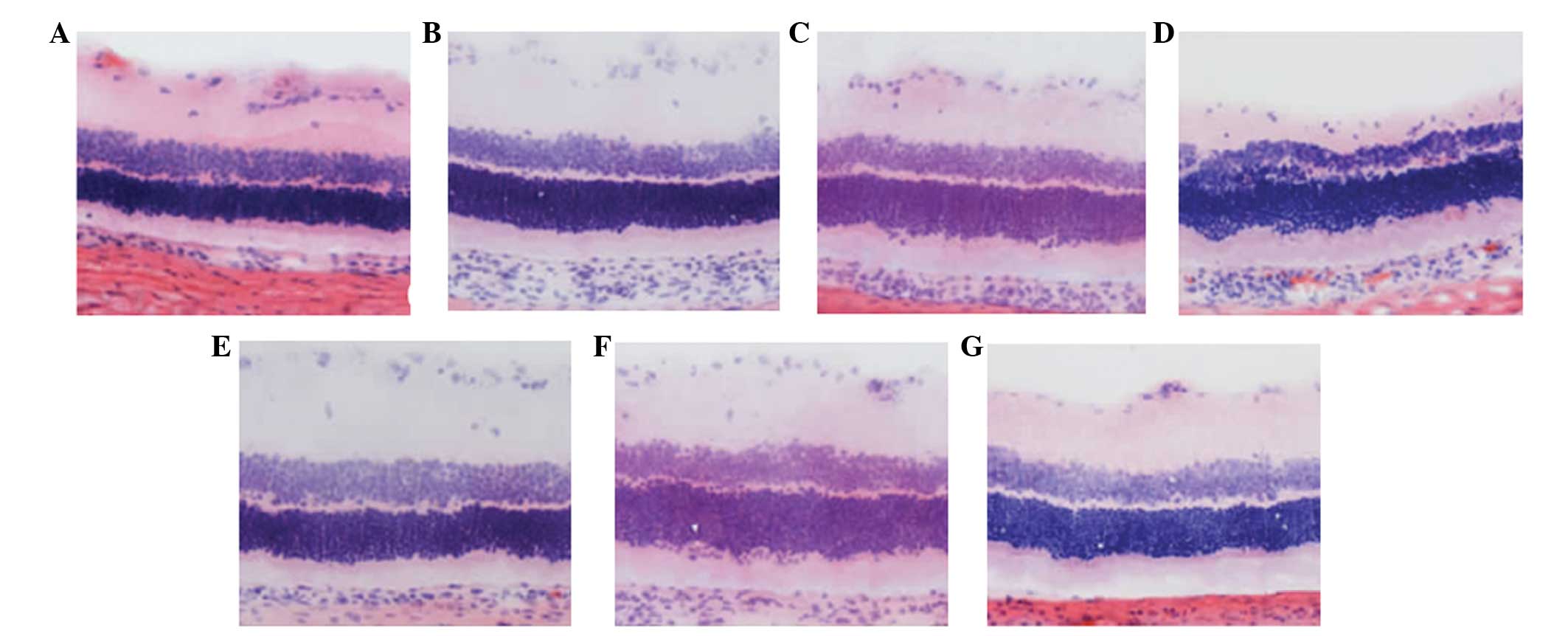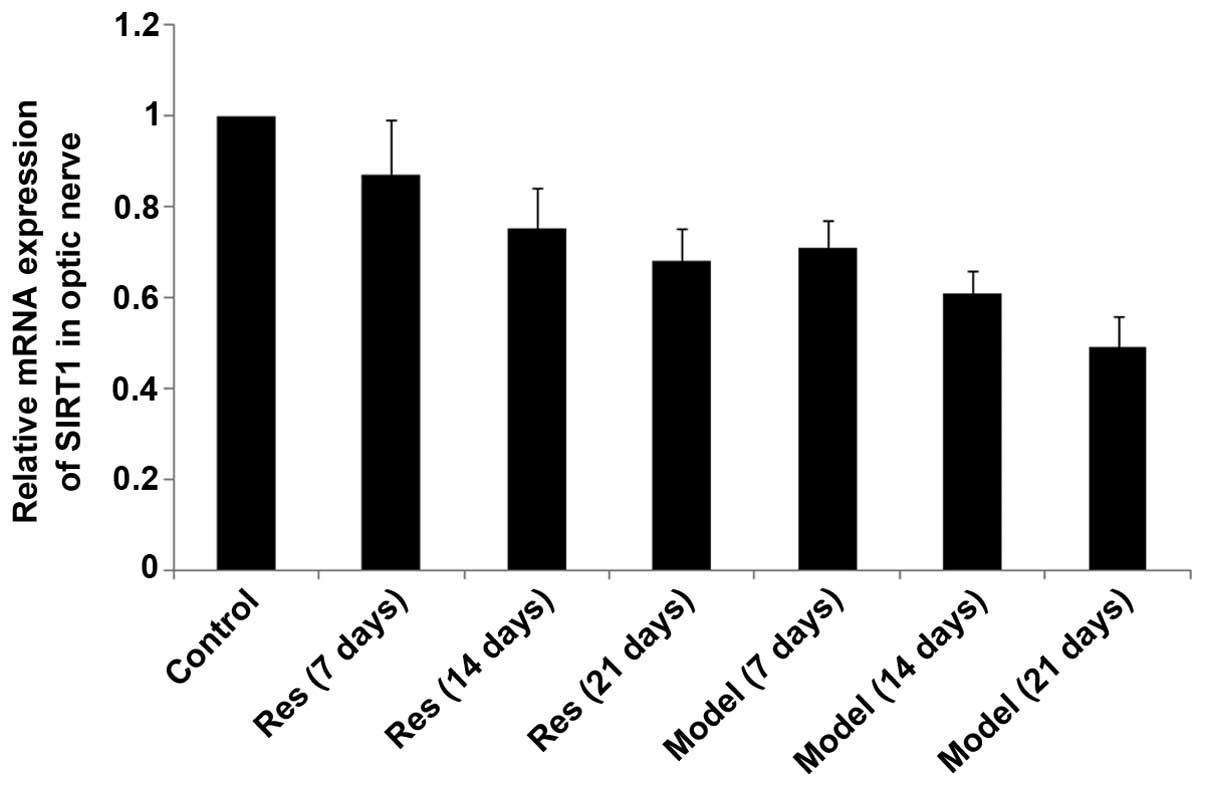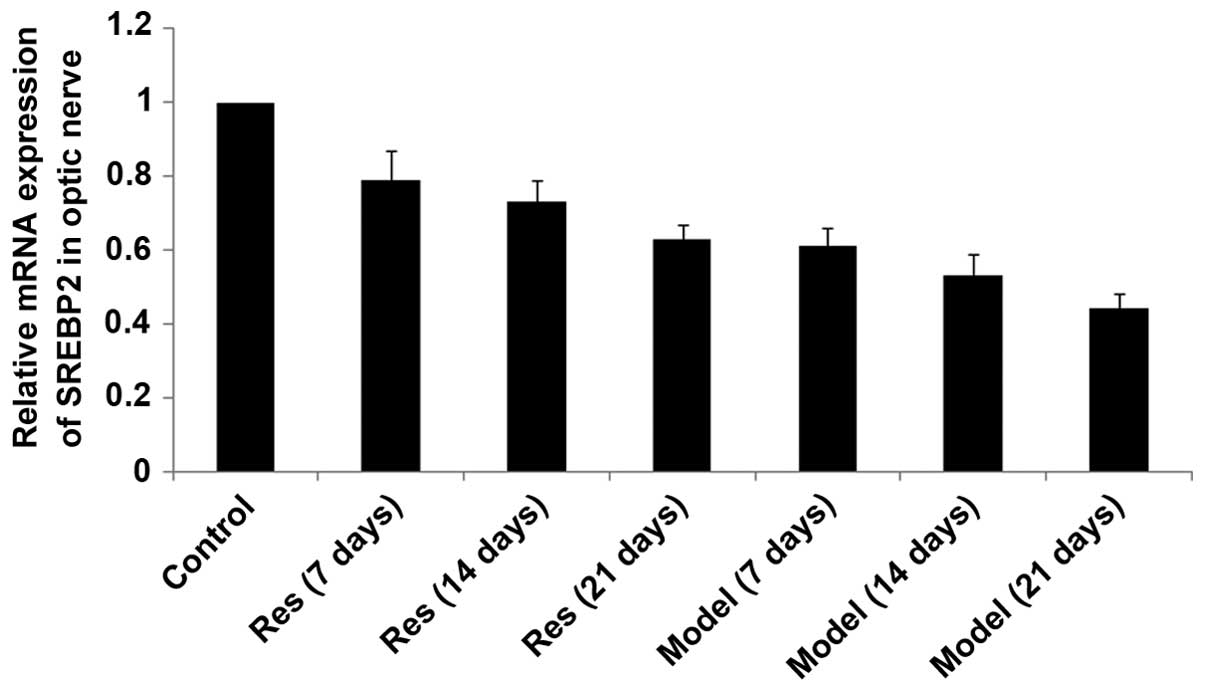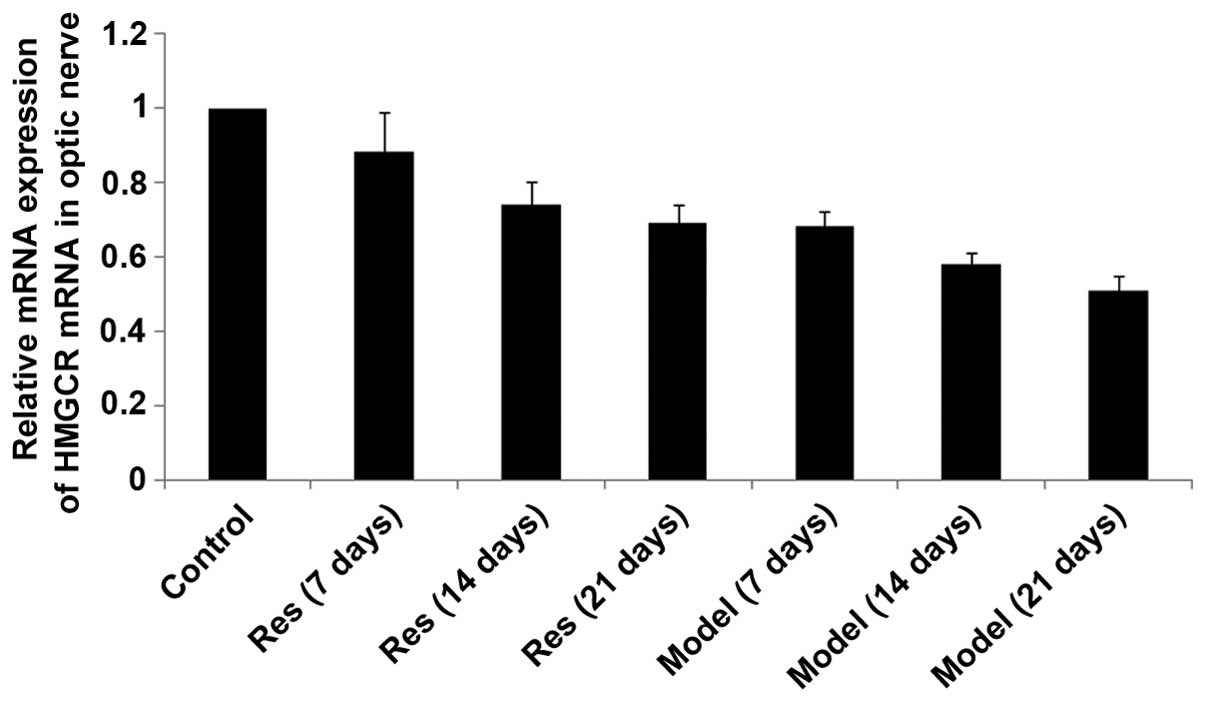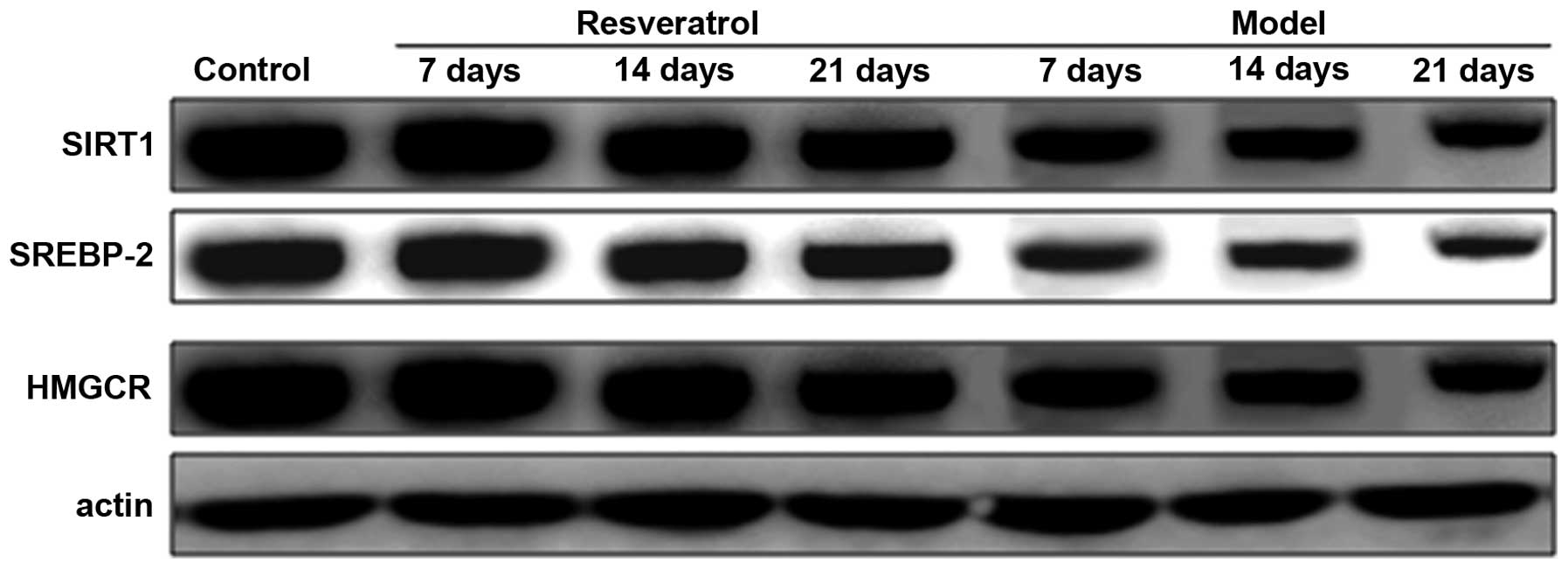|
1
|
Pernet V and Schwab ME: Lost in the
jungle: New hurdles for optic nerve axon regeneration. Trends
Neurosci. 37:381–387. 2014. View Article : Google Scholar : PubMed/NCBI
|
|
2
|
Pernet V, Hauswirth WW and Di Polo A:
Extracellular signal-regulated kinase 1/2 mediates survival, but
not axon regeneration, of adult injured central nervous system
neurons in vivo. J Neurochem. 93:72–83. 2005. View Article : Google Scholar : PubMed/NCBI
|
|
3
|
Goldberg JL, Klassen MP, Hua Y and Barres
BA: Amacrine-signaled loss of intrinsic axon growth ability by
retinal ganglion cells. Science. 296:1860–1864. 2002. View Article : Google Scholar : PubMed/NCBI
|
|
4
|
Moore DL, Blackmore MG, Hu Y, Kaestner KH,
Bixby JL, Lemmon VP and Goldberg JL: KLF family members regulate
intrinsic axon regeneration ability. Science. 326:298–301. 2009.
View Article : Google Scholar : PubMed/NCBI
|
|
5
|
Schwab ME: Functions of Nogo proteins and
their receptors in the nervous system. Nat Rev Neurosci.
11:799–811. 2010. View
Article : Google Scholar : PubMed/NCBI
|
|
6
|
Yiu G and He Z: Glial inhibition of CNS
axon regeneration. Nat Rev Neurosci. 7:617–627. 2006. View Article : Google Scholar : PubMed/NCBI
|
|
7
|
Guarente L and Franklin H: Epstein
lecture: Sirtuins, aging and medicine. N Engl J Med. 364:2235–2244.
2011. View Article : Google Scholar : PubMed/NCBI
|
|
8
|
Canto C, Gerhart-Hines Z, Feige JN,
Lagouge M, Noriega L, Milne JC, Elliott PJ, Puigserver P and Auwerx
J: AMPK regulates energy expenditure by modulating NAD+ metabolism
and SIRT1 activity. Nature. 458:1056–1060. 2009. View Article : Google Scholar : PubMed/NCBI
|
|
9
|
Brunet A, Sweeney LB, Sturgill JF, Chua
KF, Greer PL, Lin Y, Tran H, Ross SE, Mostoslavsky R, Cohen HY, et
al: Stressdependent regulation of FOXO transcription factors by the
SIRT1 deacetylase. Science. 303:2011–2015. 2004. View Article : Google Scholar : PubMed/NCBI
|
|
10
|
Rodgers JT, Lerin C, Haas W, Gygi SP,
Spiegelman BM and Puigserver P: Nutrient control of glucose
homeostasis through a complex of PGC-1alpha and SIRT1. Nature.
434:113–118. 2005. View Article : Google Scholar : PubMed/NCBI
|
|
11
|
Dioum EM, Chen R, Alexander MS, Zhang Q,
Hogg RT, Gerard RD and Garcia JA: Regulation of hypoxia-inducible
factor 2alpha signaling by the stress-responsive deacetylase
sirtuin 1. Science. 324:1289–1293. 2009. View Article : Google Scholar : PubMed/NCBI
|
|
12
|
Michan S: Acetylome regulation by sirtuins
in the brain: From normal physiology to aging and pathology. Curr
Pharm Des. 19:6823–6838. 2013. View Article : Google Scholar : PubMed/NCBI
|
|
13
|
Michan S, Li Y, Chou MM, Parrella E, Ge H,
Long JM, Allard JS, Lewis K, Miller M, Xu W, et al: SIRT1 is
essential for normal cognitive function and synaptic plasticity. J
Neurosci. 30:9695–9707. 2010. View Article : Google Scholar : PubMed/NCBI
|
|
14
|
Donmez G, Wang D, Cohen DE and Guarente L:
SIRT1 suppresses beta-amyloid production by activating the
alpha-secretase gene ADAM10. Cell. 142:320–332. 2010. View Article : Google Scholar : PubMed/NCBI
|
|
15
|
Jiang M, Wang J, Fu J, Du L, Jeong H, West
T, Xiang L, Peng Q, Hou Z, Cai H, et al: Neuroprotective role of
Sirt1 in mammalian models of Huntington's disease through
activation of multiple Sirt1 targets. Nat Med. 18:153–158. 2011.
View Article : Google Scholar : PubMed/NCBI
|
|
16
|
Donmez G, Arun A, Chung CY, McLean PJ,
Lindquist S and Guarente L: SIRT1 protects against α-synuclein
aggregation by activating molecular chaperones. J Neurosci.
32:124–132. 2012. View Article : Google Scholar : PubMed/NCBI
|
|
17
|
Guarani V, Deflorian G, Franco CA, Krüger
M, Phng LK, Bentley K, Toussaint L, Dequiedt F, Mostoslavsky R,
Schmidt MH, et al: Acetylation-dependent regulation of endothelial
Notch signalling by the SIRT1 deacetylase. Nature. 473:234–238.
2011. View Article : Google Scholar : PubMed/NCBI
|
|
18
|
Potente M, Ghaeni L, Baldessari D,
Mostoslavsky R, Rossig L, Dequiedt F, Haendeler J, Mione M, Dejana
E, Alt FW, et al: SIRT1 controls endothelial angiogenic functions
during vascular growth. Genes Dev. 21:2644–2658. 2007. View Article : Google Scholar : PubMed/NCBI
|
|
19
|
Chen J, Michan S, Juan AM, Hurst CG,
Hatton CJ, Pei DT, Joyal JS, Evans LP, Cui Z, Stahl A, et al:
Neuronal sirtuin1 mediates retinal vascular regeneration in
oxygen-induced ischemic retinopathy. Angiogenesis. 16:985–992.
2013. View Article : Google Scholar : PubMed/NCBI
|
|
20
|
Michan S, Juan AM, Hurst CG, Cui Z, Evans
LP, Hatton CJ, Pei DT, Ju M, Sinclair DA, Smith LE and Chen J:
Sirtuin1 over-expression does not impact retinal vascular and
neuronal degeneration in a mouse model of oxygen-induced
retinopathy. PLoS One. 9:e850312014. View Article : Google Scholar : PubMed/NCBI
|
|
21
|
Jiao X, Peng Y and Yang L: Minocycline
protects retinal ganglion cells after optic nerve crush injury in
mice by delaying autophagy and upregulating nuclear factor-κB2.
Chin Med J (Engl). 127:1749–1754. 2014.
|
|
22
|
Bazan NG: Homeostatic regulation of
photoreceptor cell integrity: Significance of the potent mediator
neuroprotectin D1 biosynthesized from docosahexaenoic acid: The
proctor lecture. Invest Ophthalmol Vis Sci. 48:4866–4881. 2007.
View Article : Google Scholar : PubMed/NCBI
|
|
23
|
Bazan NG, Birkle DL and Reddy TS:
Biochemical and nutritional aspects of the metabolism of
polyunsaturated fatty acids and phospholipids in experimental
models of retinal degeneration. Retinal Degeneration: Experimental
and Clinical Studies. LaVail MM, Hollyfield JG and Anderson RE: 2.
A.R. Liss; New York, NY: pp. 159–187. 1985
|
|
24
|
Scott BL and Bazan NG: Membrane
docosahexaenoate is supplied to the developing brain and retina by
the liver. Proc Natl Acad Sci USA. 86:2903–2907. 1989. View Article : Google Scholar : PubMed/NCBI
|
|
25
|
Gordon WC, Rodriguez de Turco EB and Bazan
NG: Retinal pigment epithelial cells play a central role in the
conservation of docosahexaenoic acid by photoreceptor cells after
shedding and phagocytosis. Curr Eye Res. 11:73–83. 1992. View Article : Google Scholar : PubMed/NCBI
|
|
26
|
Hoffman DR, Boettcher JA and
Diersen-Schade DA: Toward optimizing vision and cognition in term
infants by dietary docosahexaenoic and arachidonic acid
supplementation: A review of randomized controlled trials.
Prostaglandins Leukot Essent Fatty Acids. 81:151–158. 2009.
View Article : Google Scholar : PubMed/NCBI
|
|
27
|
Anderson RE, Maude MB and Bok D: Low
docosahexaenoic acid levels in rod outer segment membranes of mice
with rds/peripherin and P216L peripherin mutations. Invest
Ophthalmol Vis Sci. 42:1715–1720. 2001.PubMed/NCBI
|
|
28
|
Gordon WC and Bazan NG: Mediator
lipidomics in ophthalmology: Targets for modulation in
inflammation, neuro-protection and nerve regeneration. Curr Eye
Res. 38:995–1005. 2013. View Article : Google Scholar : PubMed/NCBI
|
|
29
|
Bretillon L, Thuret G, Grégoire S, Acar N,
Joffre C, Bron AM, Gain P and Creuzot-Garcher CP: Lipid and fatty
acid profile of the retina, retinal pigment epithelium/choroid and
the lacrimal gland and associations with adipose tissue fatty acids
in human subjects. Exp Eye Res. 87:521–528. 2008. View Article : Google Scholar : PubMed/NCBI
|
|
30
|
Acar N, Berdeaux O, Grégoire S, Cabaret S,
Martine L, Gain P, Thuret G, Creuzot-Garcher CP, Bron AM and
Bretillon L: Lipid composition of the human eye: Are red blood
cells a good mirror of retinal and optic nerve fatty acids? PLoS
One. 7:e351022012. View Article : Google Scholar : PubMed/NCBI
|
|
31
|
Kabasawa S, Mori K, Horie-Inoue K,
Gehlbach PL, Inoue S, Awata T, Katayama S and Yoneya S:
Associations of cigarette smoking but not serum fatty acids with
age-related macular degeneration in a Japanese population.
Ophthalmology. 118:1082–1088. 2011. View Article : Google Scholar : PubMed/NCBI
|



